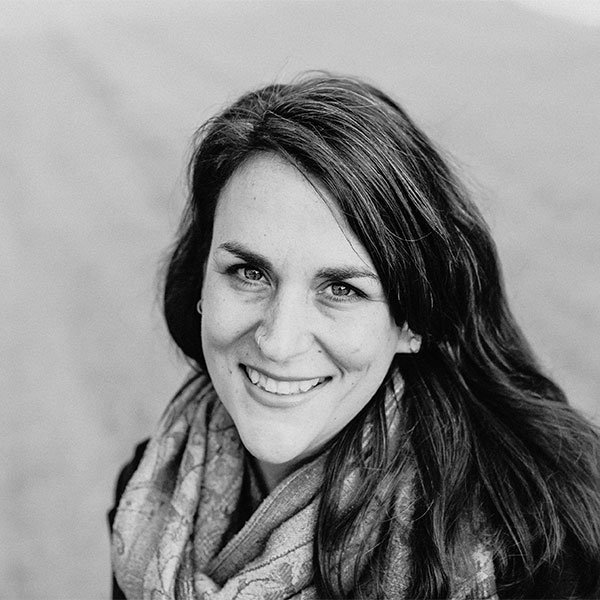
26 Aug Amy Liebenberg & Thomasina Pidgeon
SAC Artist Interview Series: Modern-day Realist Amy Liebenberg and Documentarian Thomasina Pidgeon
Written by Rachel Anne Farquharson
Norse oral history tells us a special story about driftwood —those magical wooden fossils common to waterfronts here in Squamish. The creation myth recounts the first stirrings of human life. Two pieces of driftwood, one ash and one elm, exist in the narrative as man and woman. These wise parents are storied to have birthed a race respectful of nature’s authority and the sanctuary it provides. But have we “children” risen to these expectations? The answer is clearly enunciated in a multi-artist exhibition hosted by the Squamish Public Library’s Foyer Gallery (June 29-August 10, 2021). Two local creatives, Squamish Arts Council Director Amy Liebenberg and photographer Thomasina Pidgeon, offer their respective collections as a critical conversation about Squamish’s overwhelming gentrification and the province-wide destruction of old growth landscapes. If the principle of “sight unseen” has historically enabled ignorance about our fading natural environments, then the stark reality of each collections’s imagery forces the issue unavoidably into view.
Gazing at Liebenberg’s body of work, Felled, it is clear why natural phenomena like driftwood and the majestically tall trees indigenous to the West Coast are her subject. The knots and curves that give driftwood their furled character has fascinated the artist for years, teasing her with histories of their formation and movement—their arrivals, travels, and stalls. Accordingly, anthropological research has occupied a significant portion of the artist’s workflow. Her drawings and paintings bear the weight of the logging industry’s history, its thefts and dividends. The environmentally conscious works that comprise this series celebrate the re-cycle of life demonstrated by nurse logs while addressing the ultimate frailty of the “once tall, strong, intricate, resilient old giant”.1
Nexen 1 (2019), an ink drawing comprised of inexhaustible linework and delicate shading, pictures an irregularly shaped driftwood stump. Its twisted limbs reach beyond the picture plane, extending a welcoming embrace to visitors entering the Library. Liebenberg here reveals her roots in printmaking, which she mastered while earning her BFA at Alberta College of Art and Design. Precise and complex mark making is required of the process, but few are as able to transfer such a deep contrast between line and the space of a page to free-hand drawing. And Liebenberg goes one further—Driftwood 4 delivers a meaningful shock as deep vermillion India ink seems to weep out of a pile of dismembered logs. The loose modelling of tree trunks swathed in red affects abstraction in the drawing, giving it a grave and cautionary presence. Throughout the Driftwood series, Liebenberg whispers the lives of B.C. Giant trees for all who will listen, relating the sad destruction of ecosystems in their absence.
But soft! The nurse stumps pictured in Stump 1-3 tell a hopeful tale of new life and blooming environments despite today’s tenuous conditions. This trio of small painted works, manifested this time in gouache on paper, tackle not only the rudimentary skill of drawing, but also the ability to work colourful paint thoughtfully without pushing the paper’s surface beyond its limits. Liebenberg’s verdant, mossy forest scenes fill each page but the focus is always one central tree, recalling Emily Carr’s deeply personal depictions of coastal rainforests. Though not as monumental as Carr’s “big” paintings, the artist’s works demonstrate over and again a fluidity between mediums while affecting emotional and ethical responses in her audience. The act of scribing these arboreal artefacts’s likenesses to paper and panel demonstrates a humanistic ethos in Liebenberg and a true regard for local ecologies and their socio-cultural influences.
Pivoting away from the lyrical and expressive gestures made in Felled, an immediate confrontation with the lens-based work of documentarian Thomasina Pidgeon shifts the mood. For Sale is an 8×8 grid of unframed photographs with a single, larger image cocooned at its centre. It pleads radical honesty with its audience, announcing open season on the commodification of Squamish’s town proper. Covering most of the foyer’s east wall, each “snapshot” style picture documents one of many land development proposal signs currently visible throughout the Sea-to-Sky corridor. Competing billboard slogans—”Friendships. Made in Squamish” and “Jumar: Live the Adventure”, for example—take on propagandistic proportions when placed in direct contrast with the concept of an “homogenous monoculture which is replicating itself across North America”.2 Registering the impact of population growth and economic greed in her photography, Pidgeon here chooses blatant reality over aesthetic nuance, offering no apology.
Although Pidegon’s For Sale series is strong conceptually, her audience may miss the purpose of its grid component. The curatorial choice to forgo framing leaves the 8”x10” photographs without authority or statement and the repetition of imagery mainly confirms the sheer abundance of urban development in Squamish. Unwittingly adopting the visual vernacular of real estate window displays, Pidgeon misses an opportunity to be tongue in cheek. Just as real estate listings promise certain futures without consideration to the environments that suffer in their realization, so to do the grounds captured in For Sale. The series does succeed, however, when taken as a whole. The personal, social, and political implications of our land abuse and lack of maintenance—the driving force of Pidgeon’s practice—are only clear when a connection is drawn between the grid presentation and its central, larger image. “Last Standing”, an 18”x24” photograph of a tightly gathered group of tall, spindly trees, has an aura of both defence and loneliness. Pidgeon’s compositional strategy makes its mark, the shorn land surrounding the intimate huddle filling most of the photographic frame. Representing the spirited strength of our First Nations, the woody family draw near as if in recoil and protection from the very acts being forecasted in the surrounding grid. The photographer sings a swan song for thickets so crucial to the health of our environmental systems as, less slowly than surely, the advance of the developer’s army closes in to endanger them. Pidgeon aligns herself through her larger works with photographers like Canadian environmentalist Edward Burtynsky, capturing the pillaging of natural lands in the service of industrialized landscapes.
Felled and For Sale make good conversationalists as the themes of human culture, ecology, and urbanization are volleyed back and forth between two opposing gallery walls. Where Pidegon exposes the man-driven actions responsible for the destruction of culture, habitat, and local tradition, Liebenberg gives voice to resultant losses and renewals of wild plants species and animal life. Both artists call on humanity—our collective conscious to right the wrongs so prominent in today’s profit-driven, growth-dependant economy. The mixed exhibition leaves an aftertaste of curiosity and agency in viewers, provoking questions and inspiring much needed change.[/vc_column_text][vc_empty_space height=”20px”][vc_separator type=”normal”][vc_empty_space height=”20px”][vc_column_text]
1 Amy Liebenberg, “Q & A with AMY LIEBENBERG, ‘Felled ‘, FOYER Gallery, Squamish Public Library Virtual Gallery, June 29-August 10, 2021
2 Thomasina Pidgeon, “Q & A with THOMASINA PIDGEON, ‘Changing Squamish, Part One: For Sale ‘, FOYER Gallery, Squamish Public Library Virtual Gallery, June 29-August 10, 2021

